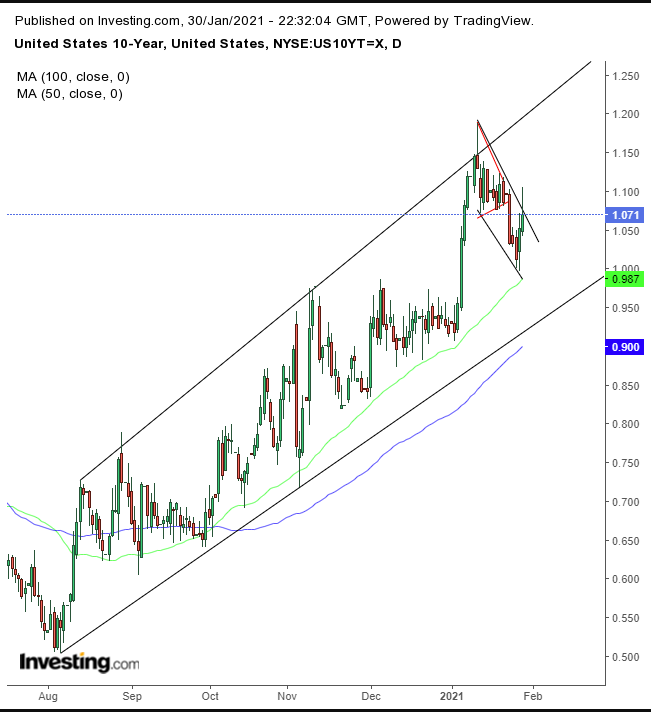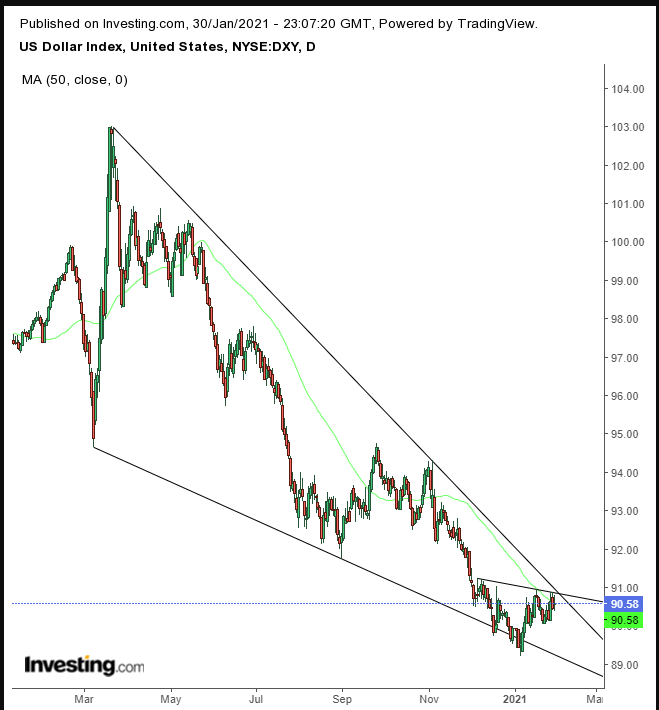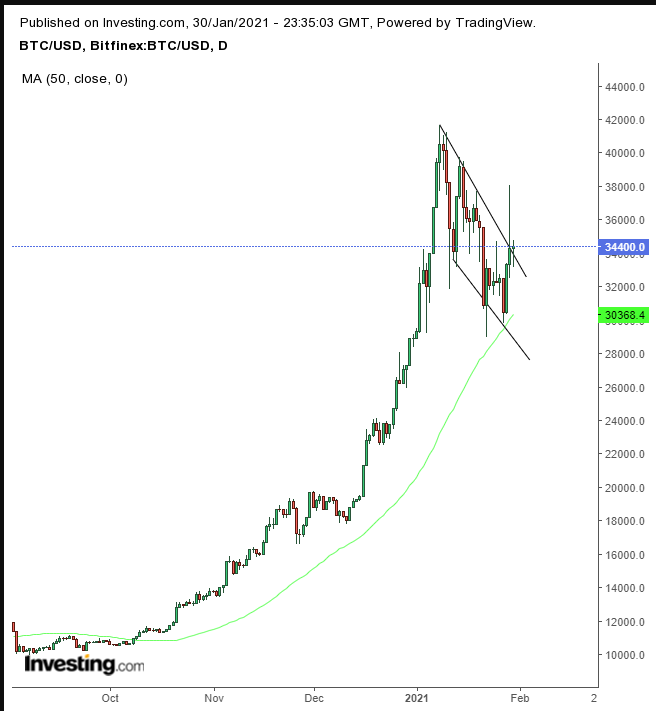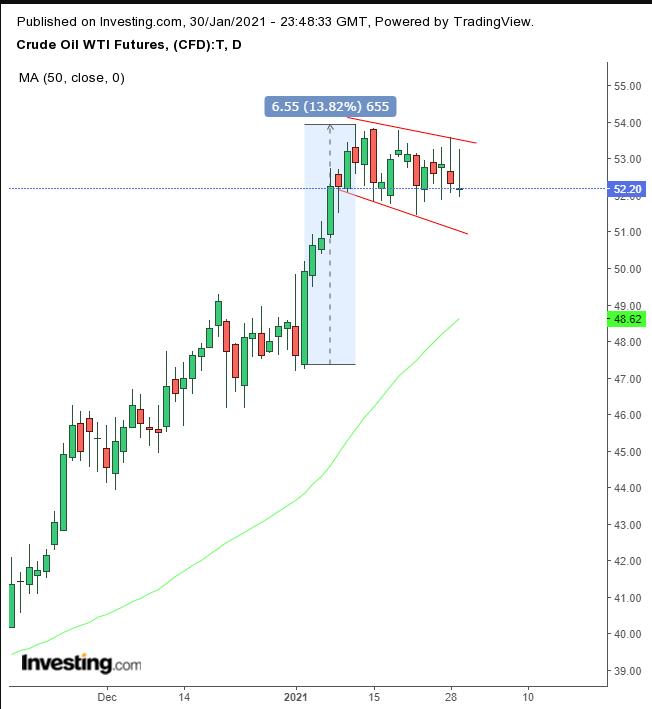- Retail traders vs Wall St. fund volatility narrowly focused but could spread to broader market
- Development of new virus strains and vaccine logistics will dominate market sentiment
The S&P 500, Dow Jones and NASDAQ indices all slumped on Friday, to complete the worst weekly selloff in three months. The sharp tumbles were triggered by speculative excess along with ongoing pandemic concerns and the continued inability of US and global health systems to efficiently distribute vaccines. Expect these conditions to remain firmly in play as the trading week begins on Monday.
Worries that hedge funds would reduce market liquidity after taking a beating from retail traders and investors using social media platforms such as Reddit to drive a series of short-squeezes against fund short-targets such as GameStop (NYSE:GME) and AMC (NYSE:AMC) among others has been gaining traction. GME jumped 400% last week, while AMC gained 278% for the week.
Conversely, the SPX lost nearly 2% on the final day of trade for the week and month. During January, the benchmark index fell 1.1% while the 30-component Dow dropped 2% for the month. The VIX volatility index rose 45% during January.

The S&P 500 found support above the 50 DMA, after falling below its uptrend line since Oct. 30. However, both the MACD and RSI topped, suggesting the index price may fall toward the 100 DMA.
Fears that the market may slump further escalated after Thursday's Q4 GDP release showed a slower pace of growth for the US economy than had been seen in the previous quarter, due to more cautious consumer spending, which is responsible for 70% of the country's GDP. Analysts expect, however, that economic activity and employment should rebound, especially in the wake of the $900 billion Congressional fiscal stimulus package, passed in December, which was designed to be a catalyst for the faltering recovery.
New Bubble Or Simply Main St.'s Revenge
Investors must now grapple with the question of whether the GameStop short squeeze is a bubble driven symptom of the kind seen during the 2000 dot.com run-up and 2008 housing bubble which ultimately pressured markets significantly lower.
A call uniting retails traders on Reddit to go against a massive GME hedge fund short went viral, pushing up GameStop shares. This was followed by additional retail trader moves on other stocks, forcing large funds to cover their positions, driving prices of some poorly performing stocks sky-high.
GME finished Friday’s session at $325, locking in a 400% surge in just the past week, which included Thursday’s 44% plunge, that erased $11 billion in value, after brokers disabled retail accounts only on the buy side. The fact that brokers enabled only the side that helped hedge funds versus the little guy, raised potential conflict of interest issues, not to mention the idea that a conspiracy to manipulate the stock market or even securities fraud was in play.
Vladimir Tenev, CEO of the popular financial trading app Robinhood, explained that they were forced to restrict buying because of regulatory issues and clearing houses increasing financial security requirements amid unprecedented volatility. Whatever the causes of the trading restrictions of some retail accounts, lawmakers in Washington have called for investigations.
Whether Robinhood and other brokers have been siding with the rich in order to steal from the poor, or whether the current action turns out to be a version of David versus Goliath—with Main Street's retail traders taking on the Wall Street establishment—the wild volatility is occurring because of narrow market mechanics.
From our perspective, based on our understanding of the underlying causes of the volatility, however dramatic, we don’t believe it's necessarily an indication of a market top. Having said that, market chain reactions sometimes have unintended consequences. As such, there is the possibility that this could lead to a big hedge fund market withdrawal whose volatility could add weight to already existing bearish sentiment around fears of the UK and South African coronavirus variants and vaccine woes.
Yields, including for the 10-year Treasury note, have fallen for the third straight week, attesting to investors preserving capital via the safety of Treasuries.

Still, rates have been moving along a falling flag, which morphed from an earlier, smaller pennant (red). The upside breakout—supported by the 50 DMA—will confirm the rising channel, which is being propelled by the 100 DMA.
The dollar reversed higher, filling out a potential H&S bottom.

The upside breakout of the move would include a massive falling wedge.
Gold continued to be caught between two trends.

The price of the precious metal is developing a rising flag, bearish after the preceding 7.4% plunge in just the five sessions between Jan. 6-Jan. 11. It's all developing within a falling channel to boot. On the other hand, there may be a supply-demand reversal, as the yellow metal draws out a H&S bottom.
Bitcoin climbed for the third day, turning positive for the week and ending a two-week-long losing streak.

The most popular digital currency found resistance by the top of a range whose upside breakout would complete a falling flag, supported by the 50 DMA that has been undergirding the price since October.
Oil was flat for the week.

WTI has been meandering within a falling flag. An upside breakout would imply a target toward the $60 level, after the price spiked 6.5% within just seven sessions, which preceded the take-profit range.
The Week Ahead
All times listed are EST
Sunday
20:45: China – Caixin Manufacturing PMI: expected to dip to 52.7 from 53.0.
Monday
3:55: Germany – Manufacturing PMI: seen to slip to 57.0 from 58.3.
4:30: UK – Manufacturing PMI: likely remained steady at 52.9
10:00: US – ISM Manufacturing PMI: predicted to edge lower to 60.0 from 60.5.
22:30: Australia – RBA Interest Rate Decision: forecast to remain at 0.10%.
Tuesday
16:45: New Zealand – Employment Change: anticipated to remain flat at -0.80% QoQ.
20:45: China – Caixin Services PMI: probably slumped to 51.1 from 56.3.
Wednesday
3:00: Eurozone – ECB Monetary Policy Statement
4:30: UK – Services PMI: likely to remain at 38.8.
5:00: Eurozone – CPI: to advance to 0.5% from -0.3% YoY.
8:15: US – ADP Nonfarm Employment: seen to surge to 45K from -123K.
10:00: US – ISM Non-Manufacturing PMI: to slip to 56.8 from 57.7.
10:30: US – Crude Oil Inventories: predicted to soar to 0.430M from -0.910M.
Thursday
4:30: UK – Construction PMI: to slump to 52.9 from 54.6.
7:00: UK – BoE Interest Rate Decision: anticipated to stay at 0.1%.
8:30: US – Initial Jobless Claims: expected to improve to 4,750K from 4,771K.
19:30: Australia – Retail Sales: printed at -4.2% in November.
Friday
8:30: US – Nonfarm Payrolls: forecast to soar to 50K from -140K.
8:30: US – Unemployment Rate: seen to remain flat at 6.7%.
8:30: Canada – Employment Change: to rise to -55.0K from -62.6K.
10:00: Canada – Ivey PMI: previously came in at 46.7.
